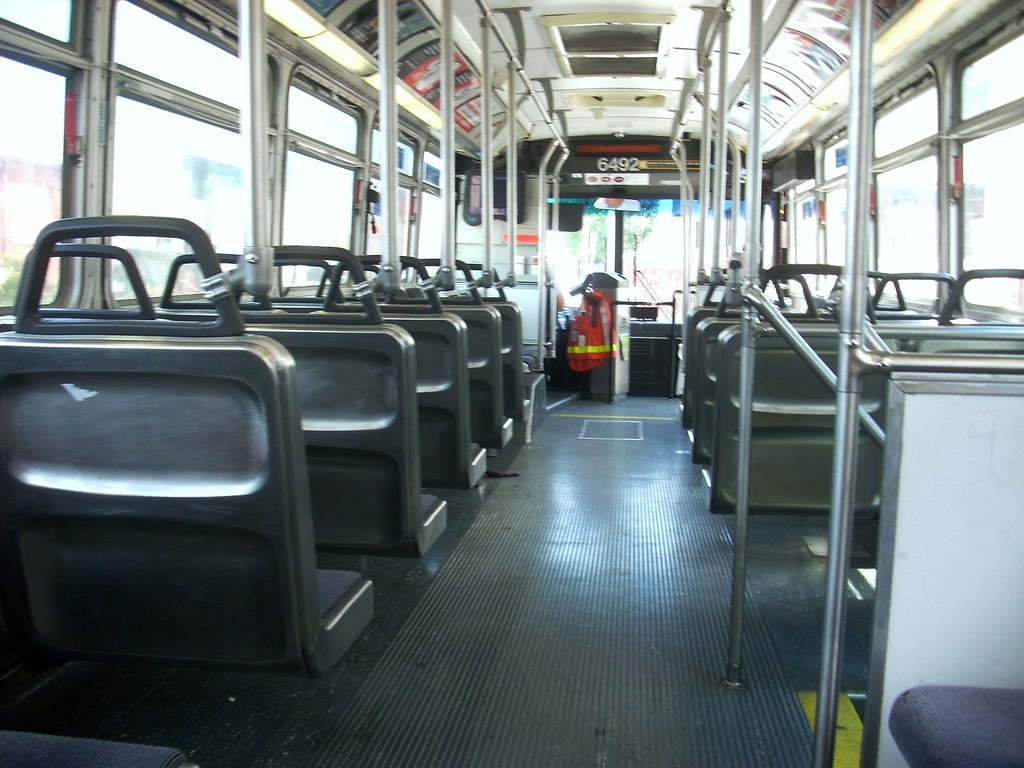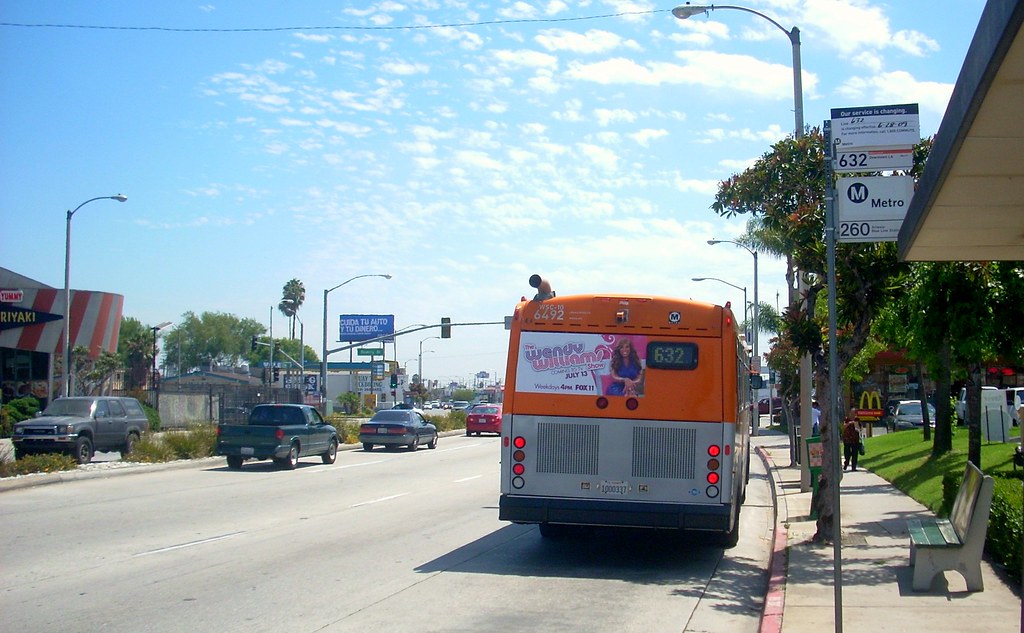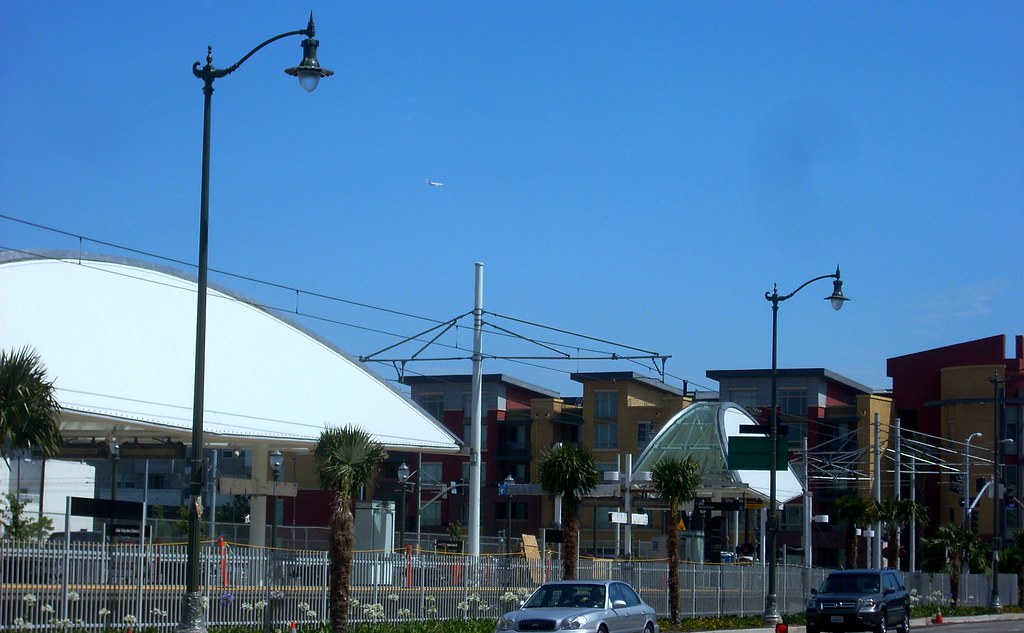Link: Ride Report: Metro Line 632, the Gold Line emulator | MetroRiderLA
Ride Report: Metro Line 632, the Gold Line emulator
Contributed by Wad on July 1st, 2009 at 5:43 amWe like to complain, and justifyably so, at the glacial pace of making progress on public transit in L.A. It takes decades for a rail line to go from concept to completion. Even something as simple as a bus route change takes about a year of prep work before they are even implemented. Things ought to go faster.
For once, Metro did do something fast. And guess what happened? Nothing. Actually, something did happen. Nothing is a close approximation of the ridership of its seat-of-the-pants planning and operations.
L.A. Mayor Antonio Villaraigosa wanted Metro to dream with him. His dream was to have the Gold Line extension up and running by the time he celebrated his second inauguration. This left Metro a window of opportunity to tie an opening in with its normal semi-annual bus service shake-ups, which was this weekend. Just one problem: the Gold Line wasn’t going to be ready — even though several lines were rerouted and had scheduled changed as though the trains were operating.
So instead, we have Line 632. Move over Orange Line, because 632 is the bus that acts like a train. Literally. This is a bus line that nudged its way in at the last minute — even bus drivers were caught by surprise, not to mention the flustered riders on East First and Third streets. So, what happens when service is implemented quick and dirty?
Empty Neoplan on Line 632
This.
Here’s a sampling of the ridership of Line 632 on its second day, taken in the early afternoon just before rush hour. It’s not an out of service bus, or even a typical trip along the Harbor Transitway. Normally, there would be a breakdown of ridership, what buses were used and the times.
Here it is in a nutshell: There were about 10 people in total, both ways, on two separate trips taken between 2 and 3 p.m. All the buses on Tuesday were Neoplans. There were dozens more angry and confused riders who had thought a 30/31 had passed them by. A few had asked for 632 schedules. Neither bus had them, though it did have schedules for other lines out of Division 10, the yard selected to do this assignment.
The comments by one 632 driver cast some interesting light on how this Gold Line emulator was something scrambled together swiftly. Most of the drivers weren’t even aware of this line until the weekend, with the arrival of the pink sheets (run times and instructions for temporary added service). Also, only “extra board” drivers will be driving the line. “Extra board”, from Metro-ese to English, is the equivalent of a substitute teacher pool for bus drivers.
Line 632 at Atlantic and Pomona
This also means that the drivers may not become familiar enough with the routes to help out riders or build a loyal base before it vanishes.
It’s a shame, too. Metro runs this bus at a time it can ill afford to expend money on unproductive services. It also comes as some lines had reduced service, notably Line 711 losing weekend coverage.
I also noticed the flaws that will also hamper the Gold Line train when it will run. The Eastside really needs to beef up north-south bus service beyond what’s available on Soto Street and Atlantic Boulevard. And the Atlantic/Pomona station is a sorry excuse for an anchor station. This should be the focal point for Eastside bus transfers, but there is nothing visible to suggest the area can handle a huge volume of buses. Also, it will be quite a far walk to East L.A. College, which is nearby at least on a map but adds 15 minutes to students’ commutes without walking.
Does this serve as a harbinger that empty buses will equal empty trains once the Eastside gets rail service again? Hardly. Line 632 was hastily crafted, and had the line been running for at least a year, it might have built anticipation for the rail line when it opens.
Line 632 leaves Atlantic and Pomona
Besides, if you ever seen how L.A. introduces rail service, you know we turn it into an orgiastic carnival of long lines, free rides and trainloads of swag. When the first segment of the Gold Line was introduced, so many riders turned out that there was a four-hour wait for rides by midday. Expect it to happen again, and for ridership to build itself slowly but steadily.
What would the future hold for East L.A. after the train starts running? It’s hard to say now. Transit-oriented development, just like the other kind, will be in a deep freeze even after the economy begins to recover. Real estate may drag for much longer, possibly at least another generation, because of how much was overbuilt and capital lost during the real estate bubble.
East L.A. is also a special case. It is predominantly Latino and mostly dense individual tract homes that usually stays within a family for generations. It has not become overbuilt and will likely stay the way it is for the forseeable future. Boyle Heights, though, has the markings of a potential Echo Park-like gentrification. The rail line will tie it to downtown, and unlike East L.A., the neighborhood sees more residential transience. There is also a stock of old housing that is prime for restoration.
What the Gold Line will also have going for it is the “gourmet/gourmand factor.” East First Street is almost wall-to-wall eating establishments. Nearly all are Mexican food, naturally, but there is tremendous variation on the styles of food by state (Oaxacan, Michoacan, D.F.-style, etc.). There is also a small pocket of Japanese businesses in Boyle Heights, clear outside Little Tokyo — which of course has its own treasures.
Little Tokyo station and Savoy condos
Regardless of whether you go see the Eastside by bus or train, either mode is fine to get a feel for the latest addition to our growing Metro network. If you want to help boost ridership, Socata’s Dana Gabbard says in a Streetsblog L.A. post that the group plans an informal ride of its own July 10.





No comments:
Post a Comment